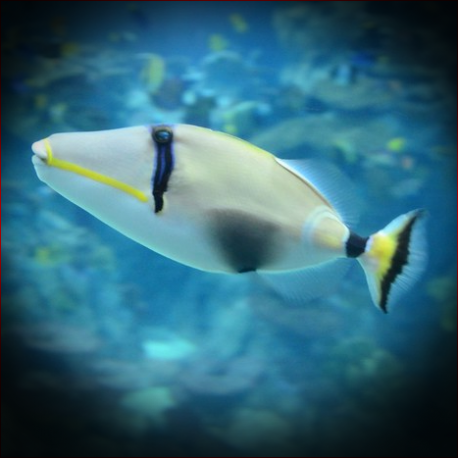More info
Datasheet
| Minimum Tank Size | 1000 litres / 264.17 US gallons |
| Maximum Size | 23.0cm / 9.06inches |
| Reef Compatible | Not reef safe |
| Temperament | Aggressive towards other species |
| Temperature | 22.2°C / 71.96°F - 25.6°C / 78.08°F |
| Specific Gravity | 1.020-1.025 |
| Carbonate Hardness | 8-12 |
| pH | 8.1-8.4 |
General Description
The Blackbelly Triggerfish, scientifically known as Rhinecanthus verrucosus, belongs to the Balistidae family, characterized by its robust jaws used for crushing rocks, shells, or corals. These fish are commonly found in the Indo-West Pacific region, ranging from the Chagos Archipelago through Indonesia to the Solomon Islands, with a habitat extending from southern Japan to Vanuatu.
Aquarium Suitability
Suitable for aquariums but with caution, the Blackbelly Triggerfish demands meticulous care due to its aggressive nature towards other fish, small species, and crustaceans. Regular feeding, ample hiding spots, and spacious tanks can help mitigate its aggressive tendencies.
Demands, Care, and Hardiness
This species requires a large amount of food, including krill, Mysis, shrimps, crabs, mussels, small fish, octopus, snails, and algae-based foods. It has an average hardiness level and needs a varied diet to thrive. Owners should be cautious as they are prone to biting and can rearrange rocks and sand in the aquarium.
Reef Suitability
Blackbelly Triggerfish are not considered reef-safe due to their predatory nature towards invertebrates and corals. Their aggressive behavior makes them unsuitable for a reef tank environment.
Aquarium Setup
A minimum tank size of 1000 liters is recommended for the Blackbelly Triggerfish to provide ample space for movement. Hiding places among live rocks should be included in the setup, ensuring rocks are securely positioned to prevent toppling. Maintaining stable water conditions with a pH range of 8.1-8.4, a specific gravity of 1.020-1.025, and a temperature between 22.2-25.6°C is crucial.
Behaviour
These triggerfish exhibit a fascinating personality, often engaging in playful activities and making grunting sounds when feeling threatened or alarmed. Owners have reported teaching them tricks using food incentives, showcasing their intelligence and adaptability.
Feeding and Diet
Feeding the Blackbelly Triggerfish a varied diet consisting of fish, larger crustaceans, and small crustaceans like krill and mysis is essential for their well-being. Special attention should be given to include foods that help prevent their teeth from overgrowing, such as clams.
Habitat and Distribution
In their natural habitat, these triggerfish are commonly found in tropical waters ranging from the East Indian Ocean to the Central/West Pacific. Their distribution spans a vast area, encompassing regions from Australia and Japan to the Red Sea and Indonesia.

